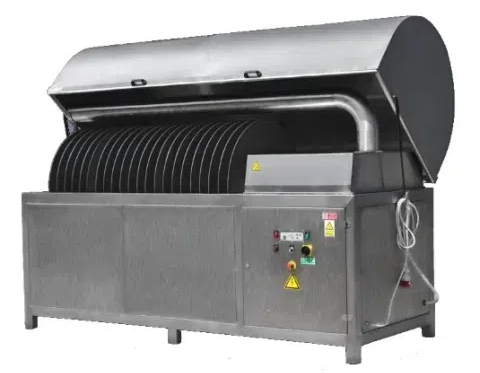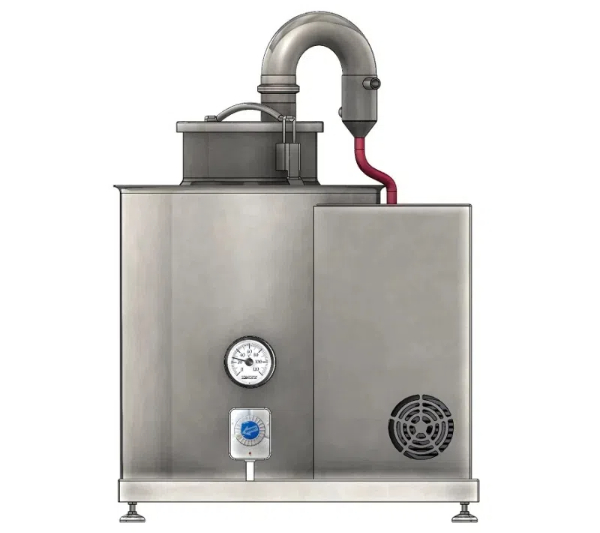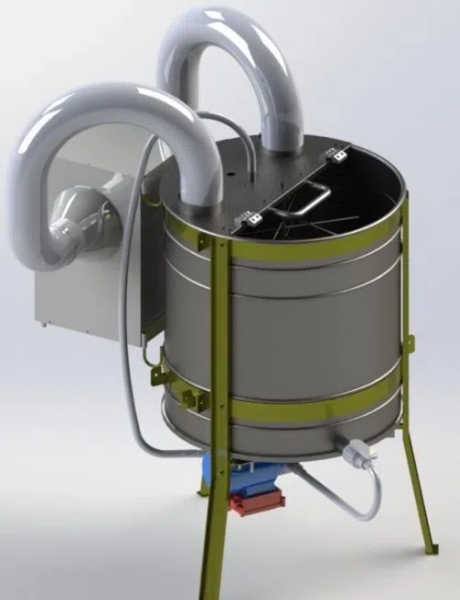
Content Menu
● Introduction to Honey Dehydration
>> Importance of Honey Dehydration
● Components of a Honey Dehydration Machine
>> Example of a Honey Dehydration Machine
● Working Principle of a Honey Dehydration Machine
● Benefits of Using a Honey Dehydration Machine
● Advanced Features in Modern Honey Dehydration Machines
● Applications Beyond Honey
>> Dehydrating Other Foods
● Maintenance and Troubleshooting
>> Common Issues
● Conclusion
● FAQs
>> 1. What is the ideal moisture level for honey?
>> 2. How does a honey dehydration machine prevent fermentation?
>> 3. What are the key components of a honey dehydration machine?
>> 4. How long does it take to dehydrate honey using a machine?
>> 5. What materials are used in constructing honey dehydration machines?
● Citations:
Honey dehydration machines are specialized equipment designed to remove excess moisture from honey, ensuring its quality and shelf life. These machines are crucial for beekeepers and honey producers worldwide, as they help prevent fermentation and crystallization, which can occur when honey contains too much water. In this article, we will delve into the working principles of honey dehydration machines, their components, and the benefits they offer.

Introduction to Honey Dehydration
Honey is a supersaturated sugar solution that naturally contains water. The ideal moisture content for honey is between 14% and 18% to prevent fermentation and maintain its quality. Honey with moisture levels above 19% is prone to fermentation and is not suitable for sale. Therefore, honey dehydration machines play a vital role in the honey production process.
Importance of Honey Dehydration
- Prevents Fermentation: Excess moisture in honey can lead to fermentation, which spoils the honey and makes it unsellable.
- Preserves Quality: Dehydration helps maintain the flavor, aroma, and nutritional value of honey.
- Extends Shelf Life: By reducing moisture, honey dehydration machines extend the shelf life of honey, allowing it to be stored for longer periods without degradation.
Components of a Honey Dehydration Machine
A typical honey dehydration machine consists of several key components:
1. Heating System: This is used to warm the honey to a temperature that facilitates moisture removal. The heating can be achieved through various methods, such as circulating hot water or using electric heaters.
2. Moisture Removal Chamber: This is where the heated honey is exposed to drying air. The chamber may include features like rotating plates or sieves to increase the surface area of the honey, enhancing moisture evaporation.
3. Air Circulation System: This system ensures that dry air is continuously circulated over the honey to remove moisture efficiently. It often includes fans or blowers to maintain airflow.
4. Control Panel: Modern machines come equipped with control panels that allow operators to adjust parameters like temperature, airflow, and rotation speed to optimize the dehydration process.
Example of a Honey Dehydration Machine
The Lyson W4020 honey dehydrator is a popular model that uses rotating plates and warm air to dehydrate honey. It has a capacity of 330 lbs (about 150 kg) and can remove up to 3% of moisture in 10-12 hours, depending on settings and ambient conditions.

Working Principle of a Honey Dehydration Machine
The working principle of a honey dehydration machine involves several steps:
1. Preparation: The machine is prepared by ensuring it is clean and connected to the appropriate power supply.
2. Loading Honey: Honey is poured into the machine, taking care not to exceed the recommended capacity.
3. Heating and Air Circulation: The machine heats the honey to a suitable temperature and circulates dry air over it. This process can be adjusted based on the type of honey and desired moisture level.
4. Moisture Removal: As the air passes over the heated honey, moisture is evaporated and removed from the system.
5. Recirculation (if necessary): Depending on the machine and desired moisture level, the honey may be recirculated through the system for further dehydration.
Benefits of Using a Honey Dehydration Machine
- Efficiency: These machines can process large quantities of honey quickly, making them ideal for commercial operations.
- Quality Preservation: By controlling temperature and moisture levels, honey dehydration machines help preserve the natural flavor and nutritional value of honey.
- Cost-Effective: While the initial investment may seem high, these machines can significantly reduce long-term costs by preventing spoilage and extending shelf life.
Advanced Features in Modern Honey Dehydration Machines
Modern honey dehydration machines often include advanced features such as:
- Adjustable Temperature and Airflow: Allows operators to customize the dehydration process based on the type of honey and desired moisture level.
- Digital Control Panels: Provide precise control over the dehydration process and can display real-time data on temperature, moisture levels, and other parameters.
- Stainless Steel Construction: Ensures durability and meets food safety standards.
Applications Beyond Honey
While primarily used for honey, similar dehydration technology can be applied to other food products, such as fruits and vegetables. This versatility highlights the potential for these machines in broader food processing industries.
Dehydrating Other Foods
- Fruits and Vegetables: Dehydration machines can be adapted to dry fruits and vegetables, preserving them for longer periods and enhancing their shelf life.
- Herbs and Spices: These machines can also be used to dry herbs and spices, maintaining their flavor and aroma.
Maintenance and Troubleshooting
Regular maintenance is crucial to ensure the longevity and efficiency of honey dehydration machines. This includes cleaning the machine after each use, checking for any blockages in the air circulation system, and ensuring all electrical components are functioning properly.
Common Issues
- Clogged Air Vents: Can reduce airflow and efficiency. Regular cleaning can prevent this issue.
- Temperature Fluctuations: Ensure that the temperature remains stable to avoid overheating or underheating the honey.
Conclusion
Honey dehydration machines are essential tools for beekeepers and honey producers, ensuring that honey is processed to the highest quality standards. By understanding how these machines work and their benefits, producers can optimize their honey production processes, leading to better quality products and increased customer satisfaction.

FAQs
1. What is the ideal moisture level for honey?
The ideal moisture level for honey is between 14% and 18%. This range prevents fermentation and maintains the quality of the honey.
2. How does a honey dehydration machine prevent fermentation?
By reducing the moisture content of honey to below 19%, these machines prevent the conditions necessary for fermentation to occur.
3. What are the key components of a honey dehydration machine?
The key components include a heating system, moisture removal chamber, air circulation system, and control panel.
4. How long does it take to dehydrate honey using a machine?
The time required to dehydrate honey depends on the machine's capacity, ambient conditions, and settings. For example, the Lyson W4020 can remove up to 3% of moisture in 10-12 hours.
5. What materials are used in constructing honey dehydration machines?
Many machines are constructed from stainless steel, which is durable and meets food safety standards.
Citations:
[1] https://pmc.ncbi.nlm.nih.gov/articles/PMC4573101/
[2] https://www.betterbee.com/lyson-honey-processing-equipment/lyson-w4020-dehydrator.asp
[3] https://huggingface.co/openbmb/VisCPM-Chat/raw/main/vocab.txt
[4] http://eprints.utm.my/91392/1/AzwadAbid2019_AnOptimizedHoneyDehydration.pdf
[5] https://www.multi-sweet.com/how-do-you-dehydrate-honey/.html
[6] https://multi-sweet.en.made-in-china.com/product/DOjTCZIxnmkp/China-Honey-Processing-Machine-Low-Temperature-Honey-Dehydrator-Machine.html
[7] https://lyson.eu/en/honey-processing/5451-honey-dehydrator-70-kg-5903661584306.html
[8] https://www.multi-sweet.com/product/honey-dehydrator.html











